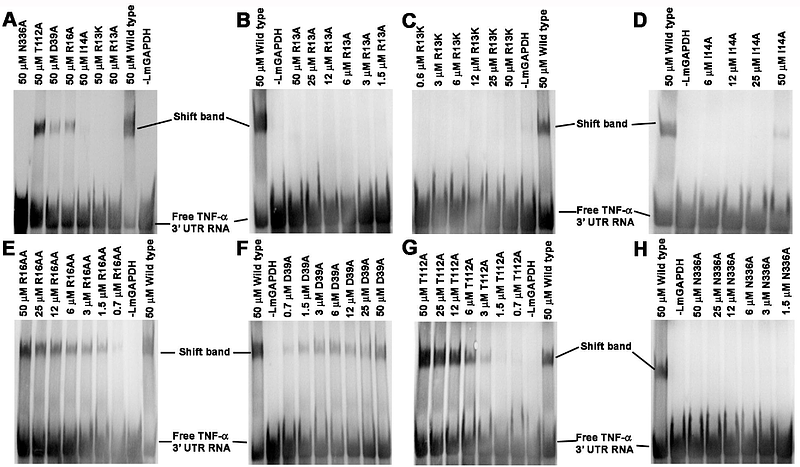Mapping of residues in leishmanial glyceraldehyde-3-phosphate dehydrogenase crucial for binding with 3'-UTR of TNF-alpha mRNA

Mapping of residues in leishmanial glyceraldehyde-3-phosphate dehydrogenase crucial for binding with 3'-UTR of TNF-alpha mRNA
Panja, P.; Das, S.; Dholey, Y.; Chowdhury, G.; Adak, S.
AbstractRecently, we described that glyceraldehyde-3-phosphate dehydrogenase from Leishmania major (LmGAPDH) was present in extracellular vesicles and it inhibited host TNF-alpha expression during infection via post-transcriptional repression. The LmGAPDH binding with the AU-rich elements in 3\'-untranslated region of TNF-alpha mRNA (TNF-alpha ARE) is sufficient for limiting this cytokine production, but the TNF-alpha ARE binding residues in LmGAPDH are still unexplored. RNA electrophoretic mobility shift assay (REMSA) and catalytic activity measurement revealed that the inhibition by TNF-alpha ARE was competitive with respect to cofactor NAD+ in LmGAPDH. To identify the TNF-alpha ARE binding residues of the LmGAPDH, we exploited a systematic mutational analysis of its NAD+ binding domain. Catalytic activity measurement indicates that both R13 and N336 amino acids in the NAD+ binding site are absolutely required for activity whereas other mutants including I14A, R16A, D39A and T112A showed higher Km (lower affinity) value for NAD+ binding and lower catalytic activity. REMSA studies revealed that the replacement of Arg-13 with Ala/Lys or Asn-336 with Ala resulted in complete loss of binding with the TNF-alpha ARE. I14A, R16A, D39A and T112A residues at or near NAD+ binding site showed lower binding with the TNF-alpha ARE compared to the wild-type protein. The protein induced fluorescence enhancement (PIFE) studies and in vitro protein translation assay further confirmed the REMSA results. Based on our findings, the NAD+ binding residues in LmGAPDH are important for TNF-alpha ARE binding.